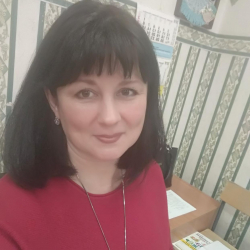
Christmas traditions
in Russia and Great Britain

Christmas is considered to be one of the main holidays of Christians,
the second after Easter.
On this day believers celebrate the major event — the birth of the Divine Son Jesus Christ who has come to earth to rescue human souls.

Christmas is celebrated on the 25 th of December.
Christmas Eve is the day before Christmas, December 24th. Christmas is the most popular family holiday in Great Britain.
Relatives and friends give each other presents.
People prepare for this holiday very carefully.
People hang a wreath on their front door, put Christmas tree in their houses around Christmas time and decorate it with ornaments, fairy lights, small toys and tinsel.

On the Christmas Eve children hang their stockings, so that Santa Claus could put presents into them oranges, sweets and nuts. Santa Claus or simply "Santa" brings presents to children at Christmas. Santa Clause travels in a sleigh pulled by reindeer. Santa Claus comes through a chimney and puts gifts for children into stockings.

Carol singing is an essential part of Christmas.
People sing carols during Christmas since the fifteenth century.
Usually children come to the front doors and start singing carols and people who live in these houses
give children candies and nuts.

A typical Christmas lunch includes turkey and pudding.
People eat turkey or goose and vegetables for Christmas dinner. Christmas is not Christmas without Christmas pudding
which is rich and fruity.
After lunch people watch the Queen’s Christmas speech on TV.

Boxing day is usually celebrated on 26 th December,
the day after Christmas.
In this day people open their Christmas presents and make visits to their relatives and friends.

Since 1992 Christmas has become a national holiday in Russia, as part of the ten-day holiday at the start of the new year. Russians celebrate Christmas on January 7 instead of December 25. Russians perceive Christmas, first of all, as a strictly religious holiday, and second as a family one.
So, what do modern Russians actually do on this day?

Principal dishes on the Christmas table in old Russia included a variety of pork (roasted pig), stuffed pig's head, roasted meat chunks, jelly (kholodets), and aspic. Christmas dinner also included many other meats: goose with apples, sour cream hare, venison, lamb, whole fish, etc.. Pies were indispensable dishes for Christmas. Sweet dishes served on the Russian Christmas table included berries, fruit, candy, cakes, angel wings, biscuits, honey. Beverages included drinking broths (kompot and sweet soups, sbiten), kissel, and, from the beginning of the 18th century, Chinese tea.

In 1935 many Christmas traditions were re-adopted as part of a new secular New Year celebration.
These include the decoration of a tree, or "ёлка" (spruce), festive decorations, the visit by gift-giving "Ded Moroz" (Дед Мороз "Grandfather Frost") and his granddaughter,
"Snegurochka" (Снегурочка "The Snowmaiden").

For most of Russians, the main winter holiday is still New Year, when families gather together for a festive meal and present each other with gifts.
Some families in Russia exchange gifts at Christmas, and some choose to continue the tradition of doing so on New Year’s Day instead. With several holidays all falling at once, there are quite a lot of gifts bought over the season.

In Russia, the festive season runs from the 31st of December through to the 10th of January.
They then celebrate the New Year again at home with family on the 14th of January, marking what would have been the New Year under the old calendar.

The special tradition of Christmas and Svyatki in Russia
was kolyadki, or glorification.
Youth and children
dressed up and went out into the court yard
with a large self-made star, singing church songs,
and also spiritual songs-kolyadki devoted to Christmas.






























